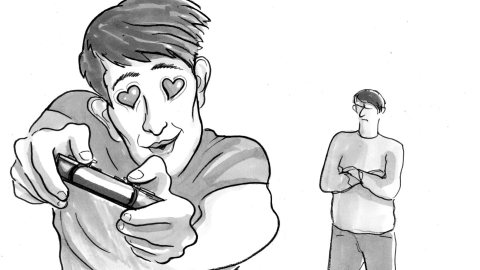Video Games = Powerful Emotech

We feel first; then think. That’s how our neurochemical plumbing works. And much of what we do, we do for how it feels. Same goes for much of what we think. We think it for how it feels. Let’s call tech we use for how it feels “emotech.”
1. Ian Bogost says great “games take over our brains” like drugs can, replacing “emotion with pattern” and repetitive structures.
2. America’s 155 million video gamers spend $22 billion annually (~2X cinema revenue). But the dollars don’t capture that a game can consume hundreds of hours and need millions of decisions. No other pastime (except sports) comes close.
3. Games can induce a feeling that psychologists call “flow,” wherein intense skilled activity causes blissful loss of awareness of self and time. Flow’s “autotelic” (done for their own sake) absorption is common in sports, music, and the arts, but rare when we’re passive.
4. The effort and skill involved in active-flow bliss logically fits our biology better than more passive pleasures. Our survival has long depended on acquiring complex second-nature skills. W.B. Yeats wonderfully said, “All skill is joyful.” Skill-joy is adaptive, and a healthy emotional diet needs effortful “satisfactions.”
5. Video games vastly outgun older emotech; their hyper-repetitive patterns can instill “System 1” habits. These are triggered before and can differ from conscious preferences (see Nicholas Kristoff’s “racism”). Whether or not you’re worried about video games, armies know that games matter.
6. Bogost says games separate “humans from their humanity.” They connect flow states to disconnection from human interaction. Their scorekeeping (mechanical numeric instant feedback) can sap our ability to “maintain social relationships” with unpredictable humans.
7. Video games raise Robert Nozick’s “Matrix” question. Can a culture thrive that seeks only pleasure and invents ways to deliver it too passively? Or too unsocially? See also: All Meaning Is Relational (or maladaptive).
8. Bogost says addicts recover “by fashioning new patterns.” He’s right; our only choices are between good and bad habits/patterns (we’re habit farmers; we evolved to often act unthinkingly).
9. Text itself can be emotech. It enabled important new ways to feel, e.g., Vikram Chandra calls novels a “sophisticated technology of selfhood.” JosephStalin called novelists “engineers of the soul.” And Bogost says literature can make you “more human.” But even powerful text — Bogost feels that “words … are the real narcotics” — goes through your System 2, to get to your System 1. Visual arts go the other way (their glamorizing or ghettoizing patterns are often unconsciously absorbed).
10. We often keep score in life’s games with money (= stored community gratitude). But as Jerome Kagan notes, money is emotech; we seek it for “the feelings” it permits(of winning, of prestige). Money is numerical “frozen desire.”
11. Bogost says “affect and logic, language and number, are fundamental opposites.” He’s right about the second part, not the first. Feeling is fast thinking. All feeling has a logic of a sort (sometimes healthy, sometimes not). Though Kagan says our vocabulary for our emotional logic (its palette and patterns) is lacking.
As with our tools, we shape our emotech, and then it shape us.
Illustration by Julia Suits, The New Yorker cartoonist & author of The Extraordinary Catalog of Peculiar Inventions





